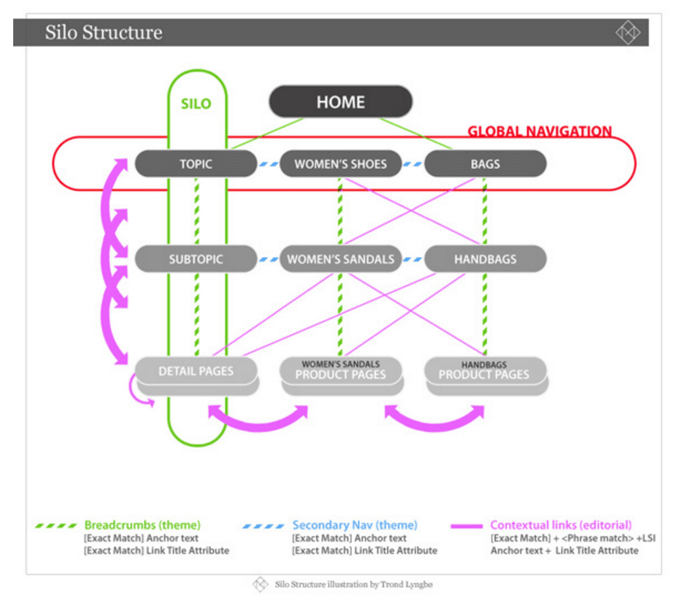9 Actionable E-Commerce SEO Tips That Will Boost Your Rankings
The Internet has fundamentally changed how consumers make purchases.
No longer do you need to drive to the store, spend a few hours there, wait in line, complete your purchase, and drive all the way back. At the click of a button you can instantly purchase a new item and have it sent directly to your home. You can do all this and much more right from your computer or mobile device.
So it’s not at all surprising then that online sales have exploded over the last decade.
And that trend is likely to continue according to estimates on global e-commerce sales.

So how can you attract more of those sales to your e-commerce site?
This is where SEO comes in. The process entails optimising various aspects of your site to increase their visibility in the search results. Ranking for your target keywords can bring a flood of traffic to your product pages and convert visitors into customers.
Here we provide 9 actionable SEO tips that will boost your rankings. Implementing even one of these is sure to grow your traffic and rankings in the search results.
1. Use an Effective Link Structure
E-commerce sites can easily have hundreds, if not thousands of products. One example that comes to mind is Amazon, one of the largest online retailers in the world. Organising all those products is no easy task but it is absolutely crucial from both a user and search engine standpoint.
When you go a supermarket, you expect everything to be neatly organised. The same applies with e-commerce sites as a poor structure means that products would be arranged in a haphazard manner. Implement a logical structure with your main product categories and subcategories underneath.
Here is an example of an optimised site structure:

A good structure is key to improve your site’s visibility and usability for your visitors.
2. Optimise Product Pages
Many business owners tend to overlook certain aspects of their online store.
Content is one of them.
For this reason many business owners pull content directly from other sources such as from a manufacturer’s website. But this creates a number of problems. If your content is duplicated from other sources, Google won’t rank your pages. Having the same images also does little to differentiate your business.
Optimise each of the following for your product pages:
- Title tags: Write a unique title for each page and aim to include your primary keywords. A well written title can increase click through rates to your site.
- Meta descriptions: Meta descriptions are the short snippets of text that display underneath the page titles in the search results. Write a unique description for each page but keep it under 160 characters.
- Images: Visitors to your site are unable to physically hold your product in their hands. So include high quality images with multiple angles.
With hundreds or even thousands of products, it can be incredibly time-consuming to write unique content for each page. But it is an absolute must if you want your pages to rank online.
3. Add Customer Reviews
Reviews influence purchasing decisions as 61% of customers read online reviews before making a decision. If an item has received hundreds of positive reviews, you would be more likely to purchase. But if the item has received mostly negative reviews, you would likely look for another option.
The largest online retailers understand this of course. So they enable the option for customers to leave a rating along with a short review of their experience.
Here is an example from Amazon:
Include customer reviews for your product pages. Depending on what e-commerce solution you have, it should be simple enough to enable. Encourage your customers to leave a review but never pay for them as doing so could get your site in trouble.
4. Optimise Your Site For Mobile
Global traffic on mobile devices has surpassed traffic on desktop devices.

The reality is that mobile cannot be ignored.
Google has even updated its ranking algorithm to consider the mobile-friendliness of your site. In other words, your rankings will suffer in the mobile search results if your site is not optimised for mobile devices.
More consumers are also increasingly shopping from their mobile devices.
You risk losing sales if your site is not mobile-friendly. Consumers have little patience for sites that are not properly optimised and most will not hesitate to tap on the back button. Google’s recommended configuration is responsive design which means that your site automatically adjusts to fit all screen resolutions.
5. Increase Your Site Speed
Each second counts. And the longer it takes your site to load, the lower your conversions.

Visitors expect pages to load quickly so take the following measures to improve your loading times: Minimise HTTP requests Reduce server response times Enable compression Enable browser caching Minify HTML, CSS, and JavaScript code Optimise images Enter in your site URL into the PageSpeed Insights tool for more insight.
6. Create Relevant Links
Links continue to carry a deal of weight in the search results.
The more links your site has the better it will rank.
But relevance is the most important factor.
A link from an authoritative site in your site will carry far more weight than a link from a spammy source. And too many of the latter will do more harm than good as it could lead to a ranking penalty. So focus on building relevant links to your pages.
Here are some effective strategies to do so:
- Create a blog: Engaging content that provides value is far more likely to attract quality links than bland, useless content. Attach a blog to your e-commerce site and keep it updated with engaging content. Use this opportunity to also link to your product pages.
- Guest blog: Another way to attract quality links is to guest blog on other sites. This strategy is far more intensive as you will need to reach out to other bloggers in your industry. But it has the potential to drive highly traffic to your pages while building quality links in the process.
- Be active on social media: Social media networks such as Facebook and Twitter are hugely popular. Create profiles on them and update your profiles with engaging content.
Leverage each of these strategies above to attract quality links to your product pages and increase their rankings.
7. Start a Company Blog
Most e-commerce sites are exactly that, e-commerce sites that only sell products.
To differentiate your site, consider starting a blog.
Blogging is a proven strategy to generate more traffic and increase sales. Most business owners overlook this seemingly simple concept. Keeping a regularly updated blog can give your business a major competitive advantage in the search results.
Each blog post is an opportunity to rank for your target keywords which improves your overall SEO. It also increases engagement with your audience and attracts links in the process.
But many business owners struggle with content ideas.
Here are some ideas to help you get started:
- News relevant to your industry
- Product guides and tutorials
- Announcements for new or upcoming products
- Frequently asked questions
Producing engaging content establishes your business as an industry authority and increases trust with your target audience. Remember that content can come in different forms so leverage video and other formats to drive better results.
8. Conduct Regular Site Audits
All it takes is a single error to wipe out your rankings or cause sales to drop.
This is why it is important to conduct regular audits as they can reveal any errors or potential issues. Then you can address them before they become a problem later on. Sign up for a Google Search Console account and check it at least on a weekly basis. If there are any issues plaguing your site, you can be able to find them here.
Here are other aspects of your site to check:
- Content: Check for any duplicate content or missing tags. These are the issues that can result in a ranking penalty.
- Backlinks: Your link profile should consist of links from relevant sources. Conduct a link audit to identify potentially malicious links and take steps to have them removed.
- Speed: Your site could start to slow down over time so be sure to check your site speed in the PageSpeed Insights tool. If your site is too slow, you could be losing sales.
- Security: Visitors want to know that their information is safe when browsing and shopping from your site. Remember to update your site’s CMS to the latest version and make your checkout pages more secure.
9. Keep Up to Date on the Latest SEO Changes
The digital landscape continues to constantly shift.
Practices that were once effective are now incredibly risky. Before all it took to rank a page for competitive keywords was to stuff it with keywords and build tons of links. But these practices no longer work and could actually get your site penalised in the search results.
This is why it is important to stay updated on the latest algorithm changes. In some cases, changes are announced months in advance so you could prepare your site before a new update rolls out. This is incredibly beneficial for obvious reasons.
Follow various blogs in the industry (including this one) to keep up to date on the latest changes.
SEO is a proven strategy that can drive more traffic and sales to your e-commerce business. Implement each of these tips as outlined above to boost your rankings in the search results.
